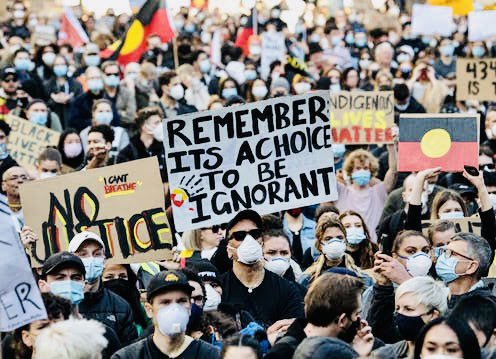
The Australian Government undertook genocide through protection policies which involved, ‘Forcibly transferring children of the group to another group’, by removing First Nations children from families and forcing them onto state-controlled reserves. 1/9 #UluruStatement #AusUPR20 

These reserves were usually organised by religious missionaries and the children were eventually adopted by white families or taken to work for them. 2/9
The children who experienced this form of genocide are known as the “Stolen Generations” which is recorded in the 1997 Bringing Them Report by Human Rights and Equal Opportunity Commission. 3/9
By 1969, the legislation that allowed Australia to remove First Nations children from their families was repealed. In 2008, Prime Minister Kevin Rudd formally apologised to the Stolen Generations. 4/9
However, First Nations children are still taken from their families by the Australian government: the figure doubled since Kevin Rudd’s apology. Indigenous children are 10 times more likely to be removed than other children: 36% of Australia’s children removed from families. 5/9
The Victorian Commissioner for Aboriginal Children and Young People, Mr Mohamed, said institutional racism in Australia is part of the reason why so many Aboriginal children are still removed from their parents: 6/9
“The view and past policies of Aboriginal people in Australia has been through the lens of white Australia, who see Aboriginal people as dysfunctional. So the policies developed are saying we need to protect Aboriginal people from themselves. 7/9
Institutional racism has to be addressed to change a racist process of class and value or lack of value." Mr Mohamed noted that self-determination for Aboriginal families was part of the solution. 8/9
The 2021 Human Rights Watch World Report notes that Australia’s Constitution does not support self-determination or recognise the rights of Aboriginal and Torres Strait Islander Peoples. It continues to enable Parliament to enact discriminatory and race-based legislation. 9/9
• • •
Missing some Tweet in this thread? You can try to
force a refresh






